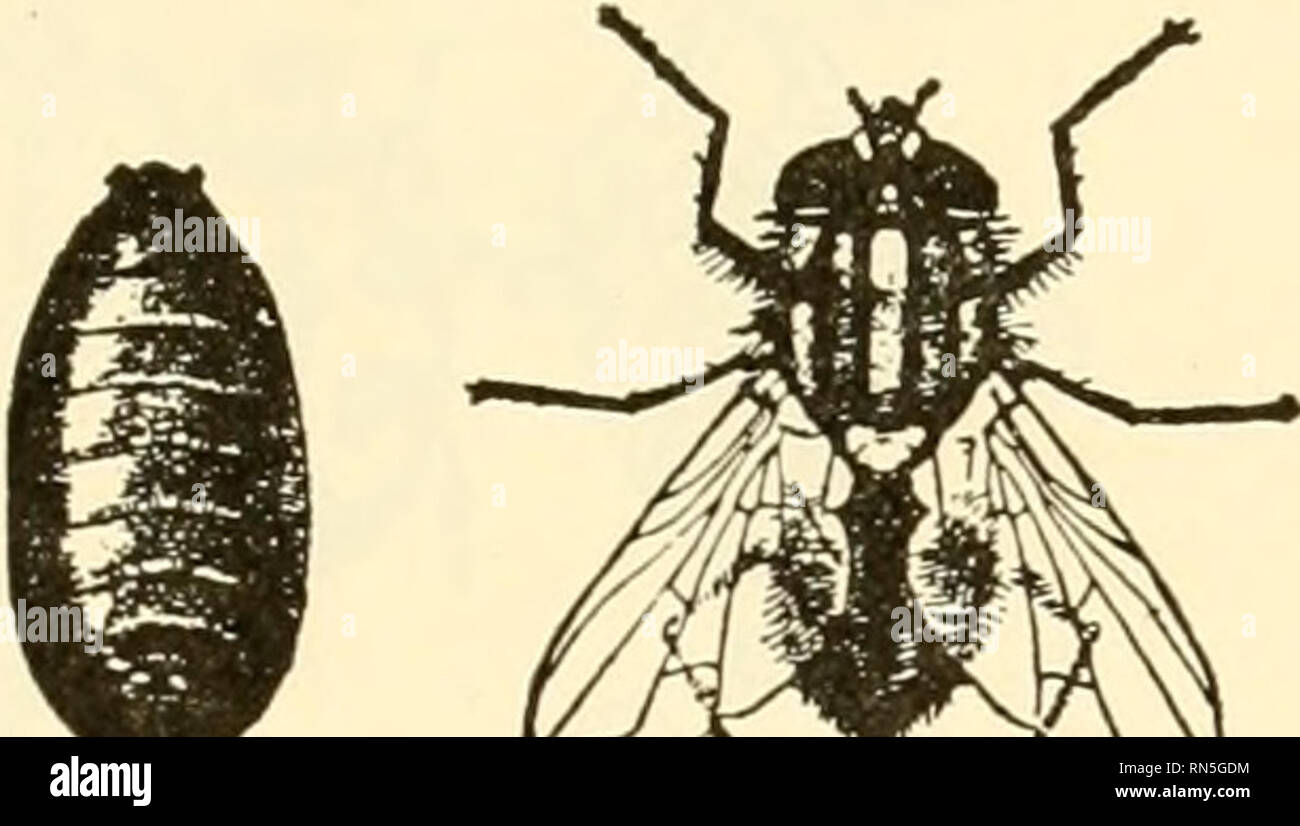. Animal biology. Zoology; Biology. CLASS INSECT A 293 which they pierce plant tissues and deposit eggs. Either poison injected at the time of the laying of the egg or irritation arising from the growth of the larva causes a hypertrophy, or overgrowth, of the plant tissues and results in the production of conspicuous swellings on the stems or leaves. These growths are galls. Galls are also produced in other ways, and the study dealing with them is a subject by itself known as cecidiology. The Diptera (dip' ter a; G., dipteros, two-winged), or flies, have only the forewings developed and functi

Image details
Contributor:
Library Book Collection / Alamy Stock PhotoImage ID:
RN5GDMFile size:
7.1 MB (204.2 KB Compressed download)Releases:
Model - no | Property - noDo I need a release?Dimensions:
2100 x 1190 px | 35.6 x 20.2 cm | 14 x 7.9 inches | 150dpiMore information:
This image is a public domain image, which means either that copyright has expired in the image or the copyright holder has waived their copyright. Alamy charges you a fee for access to the high resolution copy of the image.
This image could have imperfections as it’s either historical or reportage.
. Animal biology. Zoology; Biology. CLASS INSECT A 293 which they pierce plant tissues and deposit eggs. Either poison injected at the time of the laying of the egg or irritation arising from the growth of the larva causes a hypertrophy, or overgrowth, of the plant tissues and results in the production of conspicuous swellings on the stems or leaves. These growths are galls. Galls are also produced in other ways, and the study dealing with them is a subject by itself known as cecidiology. The Diptera (dip' ter a; G., dipteros, two-winged), or flies, have only the forewings developed and functional. Among them are the mos- quitoes, which are annoying because of their bites but which are more important because of the part they play in the transmission of diseases. Mosquitoes (Fig. 197) lay their eggs on the surface of the water, the larvae feeding upon organic matter contained in it. In this way they help to clear up the water of stagnant pools. The larvae, or wrigglers, have an air tube at the posterior end of the body through which they can obtain air for breathing. At frequent intervals they wriggle. their way to the surface and thrust this tube through the surface film to take in oxygen and throw off ^ ^^^ ^^ . carbon dioxide. The oxygen lasts ^^^ igg.—House fly, Musca domestica them for a time, but its exhaustion Linnaeus. A, larva. B, pupa. C, adult. 1 .u 4. • 4. +U^ +^v. X 4. {From Howard, Farmers' Bull. 459, makes another trip to the top Q ^ ^^^^ ^^^^ necessary. The pupa spends much more of its time at the surface, breathing through two tubes at the anterior end. When the adult emerges it rests upon the surface of the water until its wings are expanded and dried, and then it flies away. Only the females, which may be recognized by their simple antennae, suck blood. The males, which have feathered antennae, are not known to feed at all. In the absence of blood the females make use of nectar or juices of plants, and it is possible that the males may at times